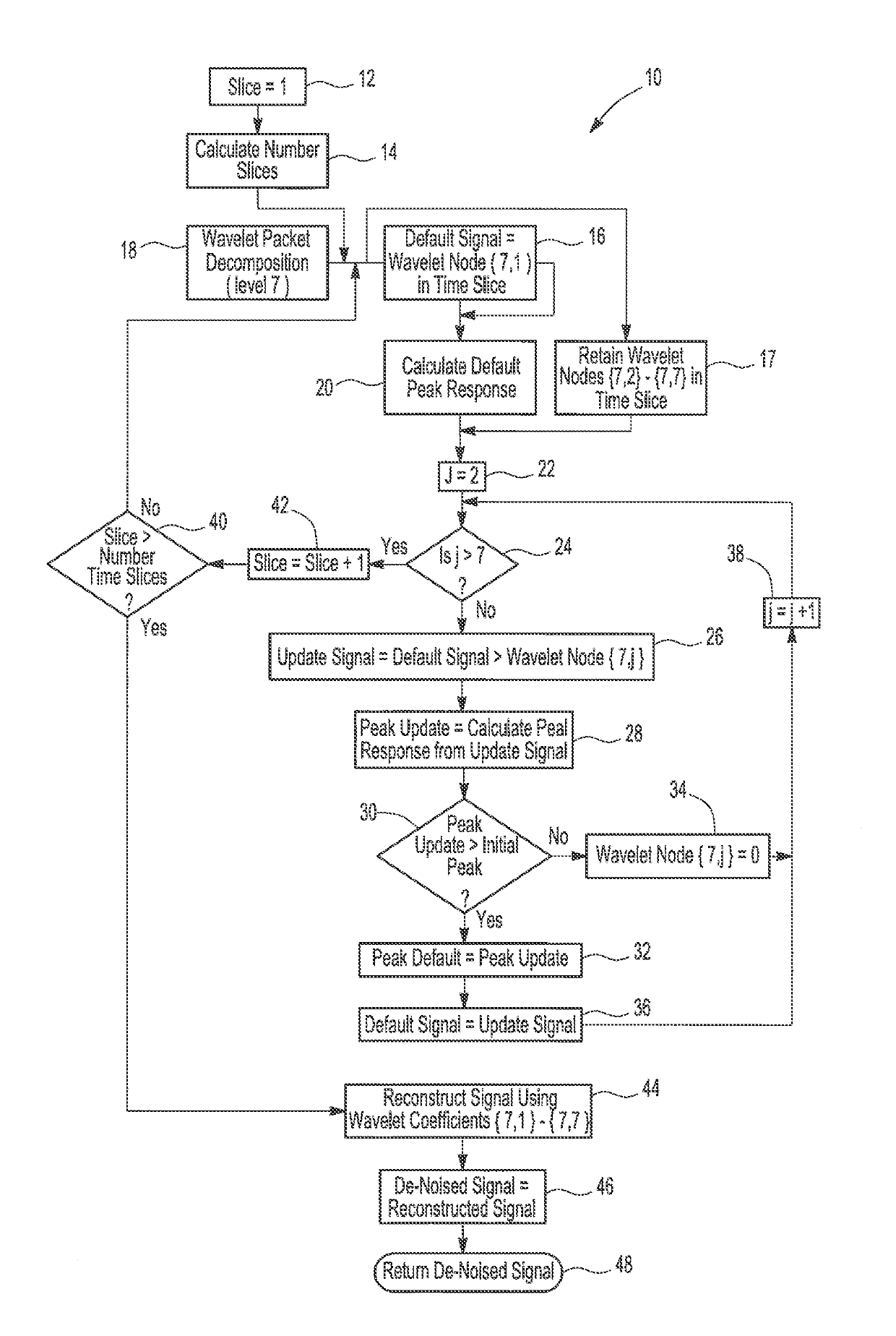Method for improving the signal to noise ratio of a wave form
a waveform and signal technology, applied in the field of improving the signal to noise ratio of a waveform, can solve the problems of difficult to accurately identify or analyze the p300 signal, the noise present on the p300 response signal varies over time, and the difficulty of properly analysing, so as to improve the signal to noise ratio of the eeg signal and improve the eeg signal to noise ratio
- Summary
- Abstract
- Description
- Claims
- Application Information
AI Technical Summary
Benefits of technology
Problems solved by technology
Method used
Image
Examples
Embodiment Construction
[0016]A flowchart or algorithm 10 illustrating a preferred embodiment of the method of the present invention is shown in the drawing. The flowchart 10, which will be described in greater detail, is performed by a programmed processor or programmed computer. Any conventional processor may be employed.
[0017]The method of the present invention begins at step 12 in which the time segment or time slice is set to an initial value of one. Step 12 then proceeds to step 14 where the number of time segments is calculated or set by the program. The number of time slices calculated or set at step 14 will vary depending upon the overall duration of the EEG signal to be processed by the method of the present invention. For example, a relatively large number of time slices will be set for an EEG signal of relatively long duration and vice versa. Step 14 then proceeds to step 16.
[0018]Contemporaneous with the calculation of the number of time slices, an EEG signal corresponding to the first time sl...
PUM
 Login to View More
Login to View More Abstract
Description
Claims
Application Information
 Login to View More
Login to View More - R&D
- Intellectual Property
- Life Sciences
- Materials
- Tech Scout
- Unparalleled Data Quality
- Higher Quality Content
- 60% Fewer Hallucinations
Browse by: Latest US Patents, China's latest patents, Technical Efficacy Thesaurus, Application Domain, Technology Topic, Popular Technical Reports.
© 2025 PatSnap. All rights reserved.Legal|Privacy policy|Modern Slavery Act Transparency Statement|Sitemap|About US| Contact US: help@patsnap.com

